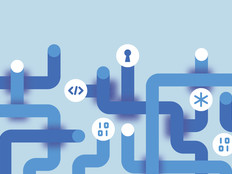2. Is Windows 11 Compatible with My Other Microsoft Products?
Yes. Windows 11 offers enhanced integration across Microsoft’s ecosystem. The new operating system supports laptops, desktops, tablets and two-in-ones with minimum configurations. Windows 11 is gradually rolling out to more machines, hitting newer PCs first.
3. What New Features Are Appealing to K–12 Districts?
With Teams for Education videoconferencing and chatting emphasized, Windows 11 can support remote workers and virtual classrooms. Classes leveraging external learning apps on Android tablets will soon enjoy those experiences on student workstations. Students with visual disabilities will benefit from enhanced voice features that help operate their devices.
RELATED: How can IT leaders make learning more accessible for students with low vision?
4. How Does Windows 11 Improve Security for My Network?
Windows 11 bundles anti-virus, anti-phishing and anti-malware protections together across all supported devices. It’s possible to secure users and identities on lost or stolen devices. Microsoft employs what it calls chip-to-cloud security, which works at all levels to isolate private data. Device encryption, virtualization-based security, and hypervisor-protected code integrity ensure that systems aren’t easy to crack.
5. How Soon Should I Upgrade, and How Long Is the Process?
You’ll want to vet Windows 11 to ensure it meets your access management demands, especially if your schools leverage mobile device management. It’s possible that configurations have changed and new security vulnerabilities — plus bugs — have been introduced. Also ensure that Windows 11 works with your existing apps.










